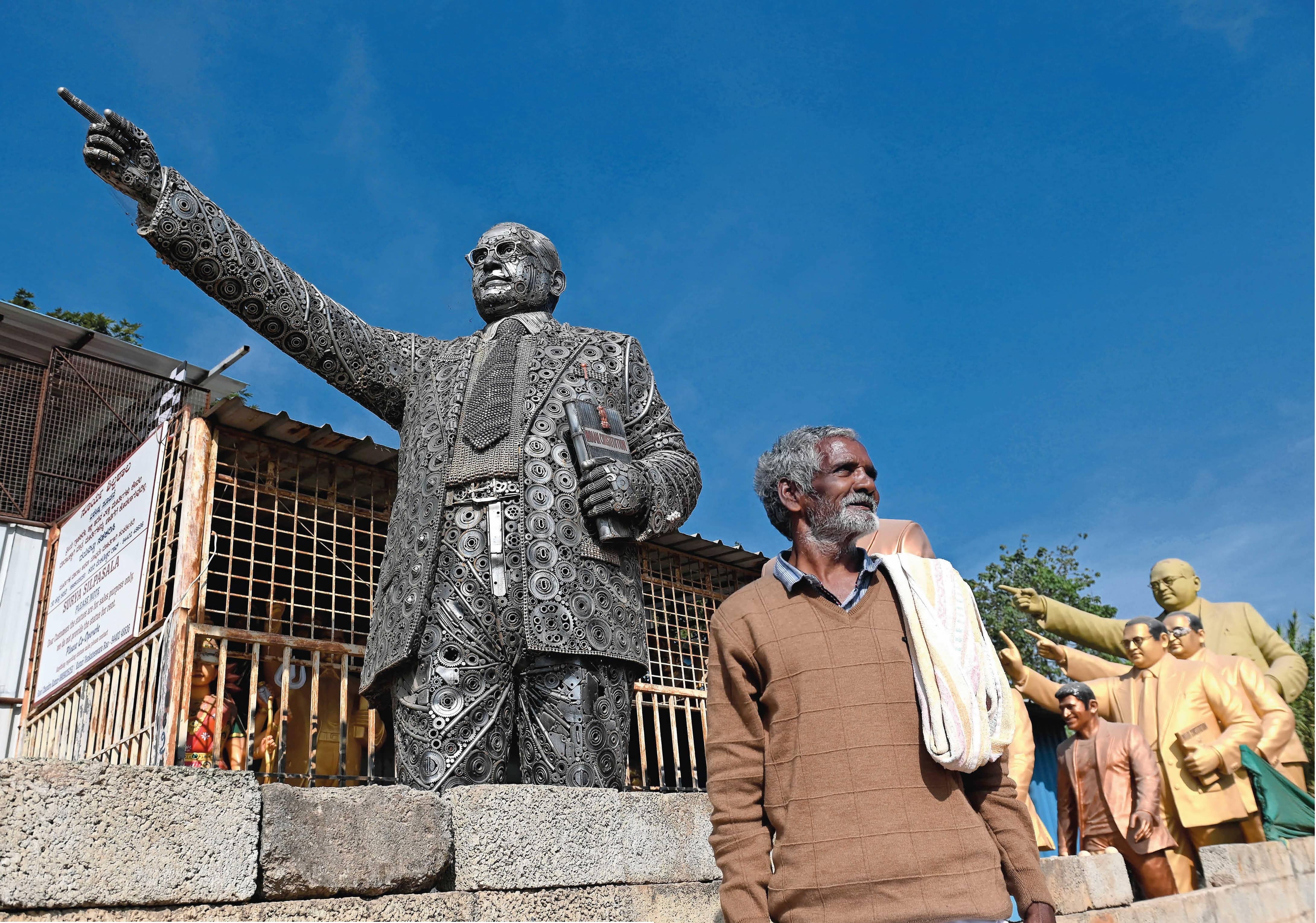
A finger pointed towards the distant horizon, as if guiding his followers to salvation; the Constitution held closely under his left arm; a suit with two pens tucked in the breast pocket, the statutes of Dr Bhimrao Ramji Ambedkar are mostly similar across the country. The Ambedkar iconography has remained largely the same since it was first designed by sculptor Brahmesh Wagh and installed in the Parliament complex in 1967.
Unlike Mahatma Gandhi's statues in which the father of the nation can be seen with different emotions and in multiple poses, Ambedkar's statues-which outnumber the statues of any other political figure in the country-have mostly retained his resolute look. For the dalit community in India, his statues have an added sociopolitical significance, being a visible marker of their identity.
As dalits assert their presence through activism, arts, political engagement, and often vociferous protests whenever the community is targeted, political parties are forced to look at Ambedkar as an icon they need to extol. Unlike other political heroes, who are often bracketed in divergent ideological streams, Ambedkar has emerged as a leader with an uncontested legacy as the country celebrates 75 years of independence. As the Indian Constitution proved to be a resilient document encompassing the diversity of a young nation, Ambedkar's contribution in giving a framework to the country makes him a formidable national leader whose stock continues to rise in India and abroad.
Diese Geschichte stammt aus der January 29, 2023-Ausgabe von THE WEEK India.
Starten Sie Ihre 7-tägige kostenlose Testversion von Magzter GOLD, um auf Tausende kuratierte Premium-Storys sowie über 8.000 Zeitschriften und Zeitungen zuzugreifen.
Bereits Abonnent ? Anmelden
Diese Geschichte stammt aus der January 29, 2023-Ausgabe von THE WEEK India.
Starten Sie Ihre 7-tägige kostenlose Testversion von Magzter GOLD, um auf Tausende kuratierte Premium-Storys sowie über 8.000 Zeitschriften und Zeitungen zuzugreifen.
Bereits Abonnent? Anmelden

Hat-Trick Or Has-Beens?
India look to win their third straight Test series in Australia, but ageing superstars and recent humiliation at home have cast a shadow on their hopes

Constipation Can Put Your Heart At Risk
PEOPLE WITH CONSTIPATION have an increased risk of major cardiac events, including heart attack, stroke and heart failure, especially if they also have high blood pressure, finds an international study published in the American Journal of Physiology-Heart and Circulatory Physiology.

Too Much Sitting Can Accelerate Ageing
SITTING FOR EXTENDED PERIODS can harm the heart and accelerate ageing, even if you are young and get the minimum recommended amount of daily exercise, according to a US study published in the journal PLOS One.

Efficiency and innovation
As health care evolves, professionals must employ innovative methods to refine their skills

Level up
Only 30 per cent of needy patients are able to undergo transplant in India; we need more dedicated transplant centres

HOPE STEMS FROM A CELL
While stem cell therapies have shown success in treating blood disorders, orthopaedic ailments, autoimmune diseases and eye issues, there is hope that they can one day treat patients with heart disease, blindness, Parkinson's, HIV, diabetes and spinal cord injuries

Mind matters
Your mindset can limit or expand your physical ability

Cutting edge
Would you go under the knife if a robot was the one holding it? Or would you say, \"No way, I need a human touch\"? You might have to decide soon because a robot that can imitate skilled human surgeons is already here.

The smallest cut
Minimally invasive surgeries have a bright future, with virtual reality and 3D procedures offering greater precision and AI on the horizon

Signalling a revolution
Canadian scientist and entrepreneur Sachdev Sidhu is focused on bringing cutting-edge antibody engineering to his country of origin